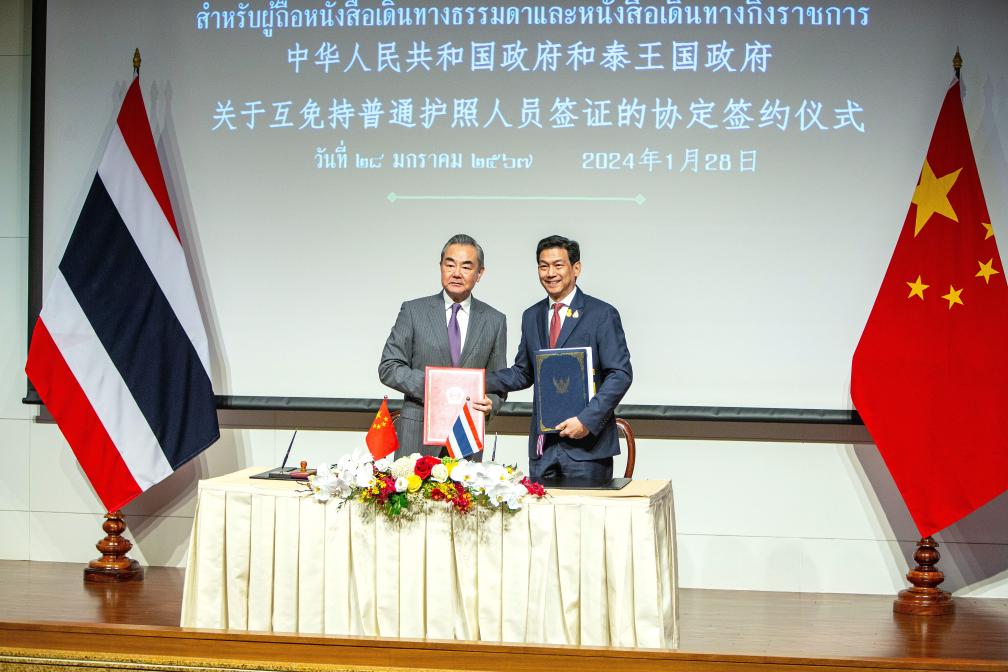LATEST INSIGHTS
Your Present Location: LATEST INSIGHTSDjoomart Otorbaev: China is quickly becoming increasingly receptive to the rest of the world
Source: CGTN Published: 2024-02-01

Editor's note: Djoomart Otorbaev, a special commentator on current affairs for CGTN, is a former prime minister of the Kyrgyz Republic, a professor of the Belt and Road School of Beijing Normal University, a member of Nizami Ganjavi International Center, and the author of the book 'Central Asia's Economic Rebirth in the Shadow of the New Great Game'(Routledge, 2023). The article reflects the author's views and not necessarily those of CGTN.
The Central Economic Work Conference of China, which took place in December last year, emphasized that economic growth should be the primary focus of the country's development. To achieve this goal, the conference gave special attention to increasing foreign direct investment and enhancing international trade. Following these decisions, the government has quickly demonstrated commitment to increasing international exchanges, strengthening economic cooperation, and raising the frequency of air traffic. As China is rapidly becoming even more open to the world, the international community must be properly informed about the new policy, and the media must make every effort in this direction.
The most important thing in the reforms carried out is the scale and speed of implementation of the decisions of the Communist Party of China. The synchronicity and decisiveness of the actions of various government departments, which demonstrated high efficiency, are striking. All necessary decisions worth tens of billions of dollars were carried out in a matter of days.
In January, China's National Immigration Administration (NIA) announced new regulations to make it easier for foreigners to enter the country. The new rules include visa-free transit and expanded categories of foreigners eligible to apply for a visa upon arrival in China. These changes are expected to encourage more foreign citizens to visit China, explore its culture, pursue education opportunities, and engage in business activities.
This decision was made to continue simplifying the entry visa process for travelers visiting China. In August last year, Beijing implemented more accessible visa-on-arrival procedures for business travelers. As per NIA information, the issuance of business visas at border ports has increased by 166 percent in the first month alone since the policy was implemented. Under the new visa rules, foreign travelers who are transiting within 24 hours are exempt from visa and border control requirements at nine Chinese international airports.
Last November, an agreement on mutual visa exemption between China and Kazakhstan came into force. In the same month, it was announced that a visa-free regime would be introduced for one year for citizens of France, Germany, Italy, the Netherlands, Spain and Malaysia, who will be able to stay in China for 15 days without a visa. A few days ago, China and Thailand decided to establish a visa-free policy for their citizens.

Chinese Foreign Minister Wang Yi, also a member of the Political Bureau of the Communist Party of China Central Committee, signs an agreement on mutual visa exemption with Thai Deputy Prime Minister and Minister of Foreign Affairs Parnpree Bahiddha-Nukara after an annual consultation in Bangkok, Thailand, January 28, 2024. /Xinhua
Introducing such measures has quickly led to a significant increase in arriving international travelers. According to the NIA, China recorded more than 1.72 million inbound and outbound trips daily during the New Year holiday in January, about five times the previous year and in line with pre-pandemic levels in 2019.
With the lifting of COVID-19 restrictions, the number of foreign visitors to China has steadily increased. In 2023, 210 million travelers arrived in China, reaching 62.9 percent of 2019 levels.
The aviation sector, through which foreign citizens mainly arrive, having received the necessary instructions from the government, has begun to experience pressure from the market and is rapidly increasing its capacity.
On January 8, the Civil Aviation Administration of China (CAAC) reported that by the end of 2023, China's scheduled international passenger flights had reached 4,782 per week, which is about 62.8 percent of pre-pandemic levels. Meanwhile, Chinese airlines operated 3,223.5 flights, or about 67 percent of the total, while other airlines operated the remaining 1,558.5 flights.
Earlier this year, it was estimated that there would be an unprecedented record number of individual air trips of more than 80 million, or an average of 2 million individual trips per day, during this year's Spring Festival period, which runs from January 26 to March 5. The growth is estimated at 9.8 percent compared to 2019.
The recovery in international travel to and from China is projected to lag somewhat behind the growth rate of the country's domestic tourism industry. After COVID-19 restrictions, it took time to conclude new international agreements and reduce barriers to obtaining visas.
On January 4, the CAAC stated it expects the number of international flights in and out of the country to reach 6,000 per week by the end of this year, or about 80 percent of pre-COVID-19 levels. The current number is around 4,600 per week, compared with fewer than 500 international flights per week at the start of 2023.
Mutual travel has the potential to create millions of additional jobs and bring economic benefits. They also contribute to infrastructure development and create opportunities for cultural exchange, and sharing of historical and gastronomical traditions. It also helps support such sectors as agriculture, communications, health and education.
Showcasing unique history, culture, art and the latest achievements of a rapidly developing China in social policies and economic models will genuinely benefit its guests as well. Active human interaction and people-to-people exchanges are crucial for building a global community of a shared future.























































































 京公网安备 11010802037854号
京公网安备 11010802037854号





